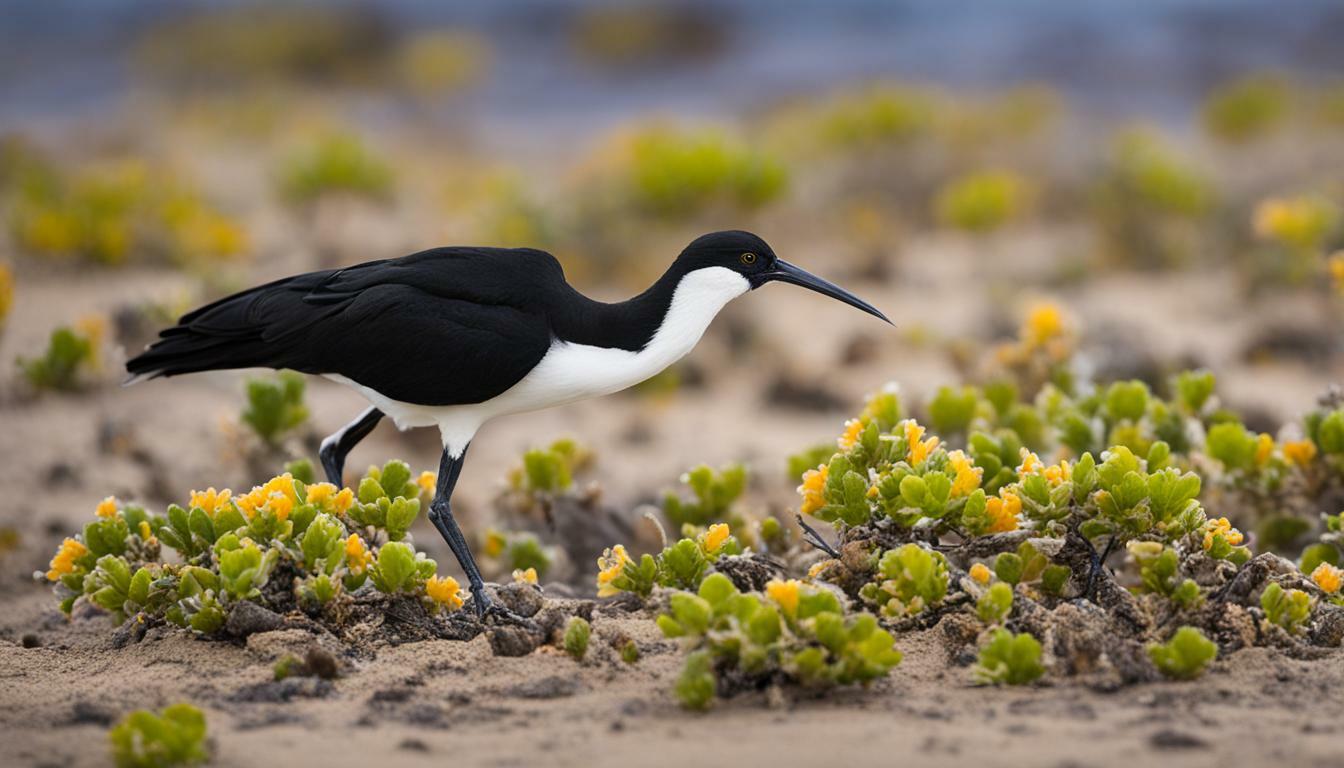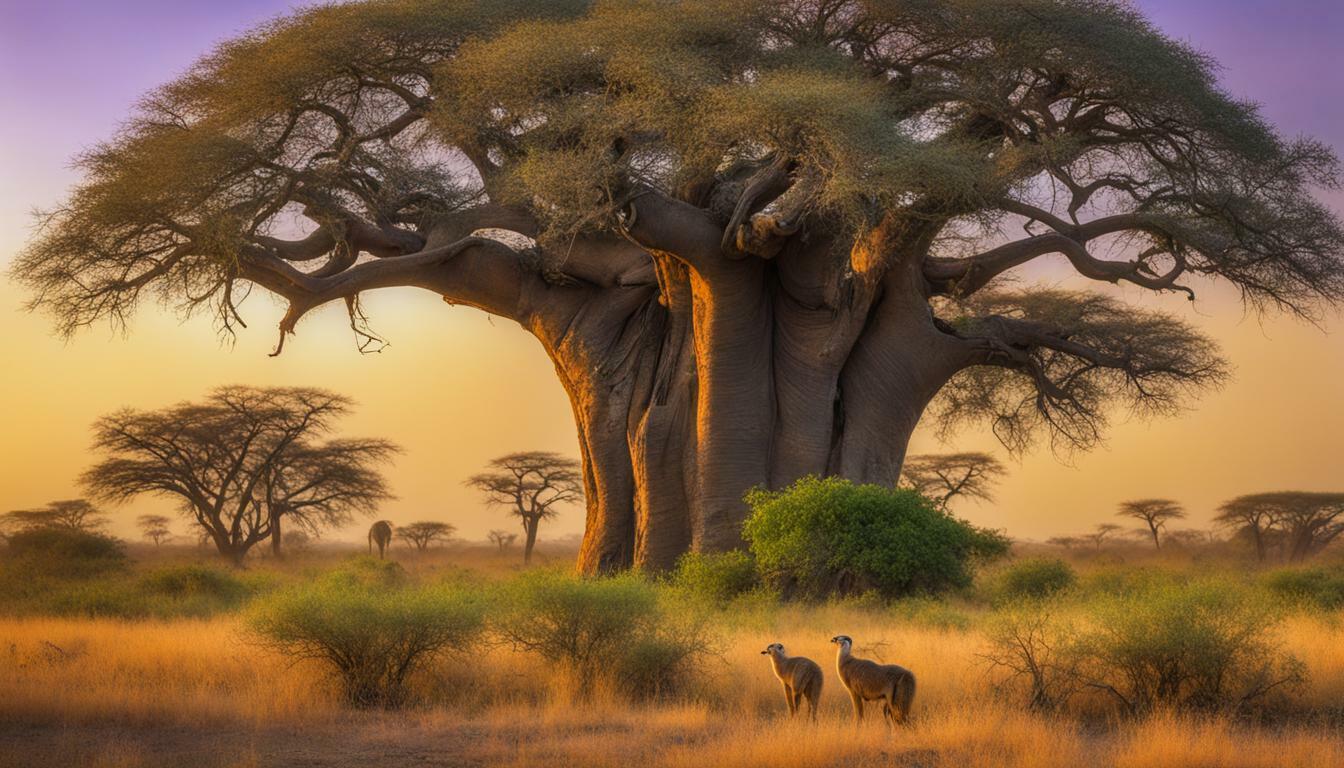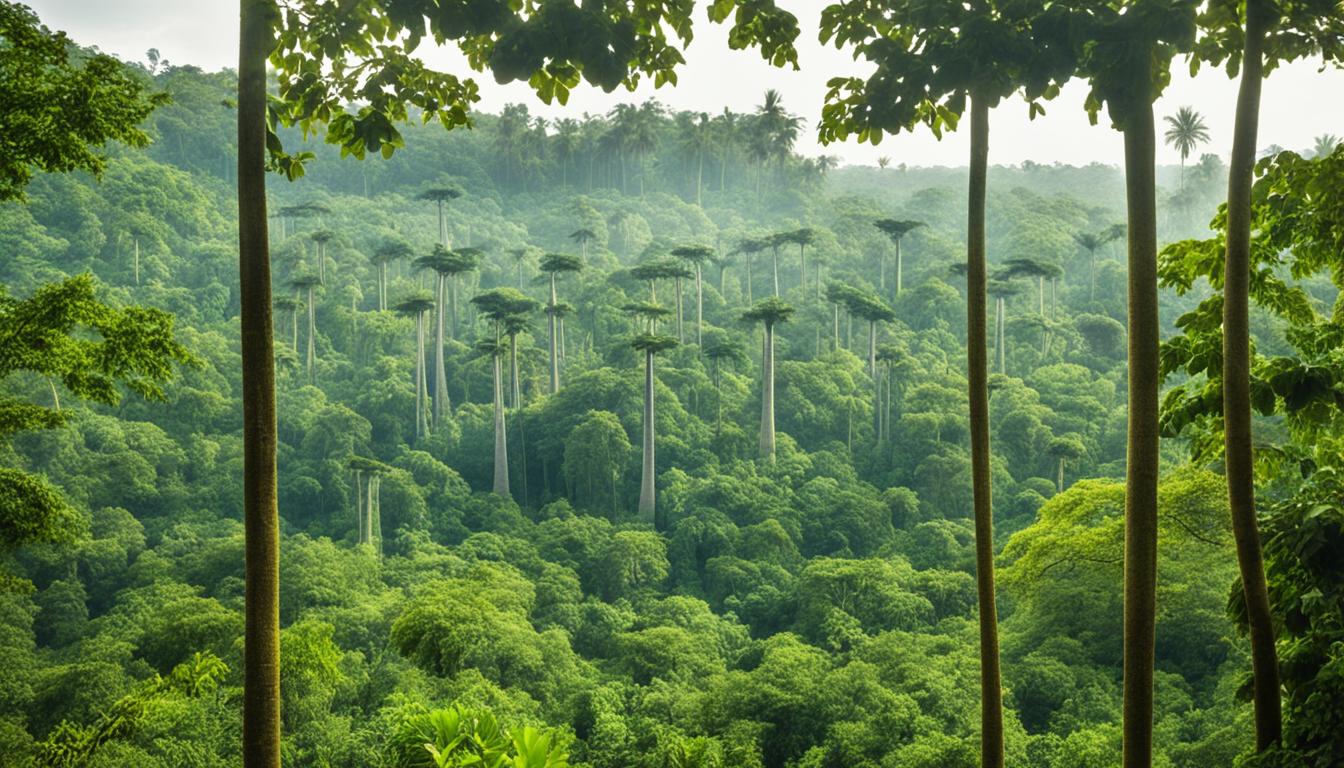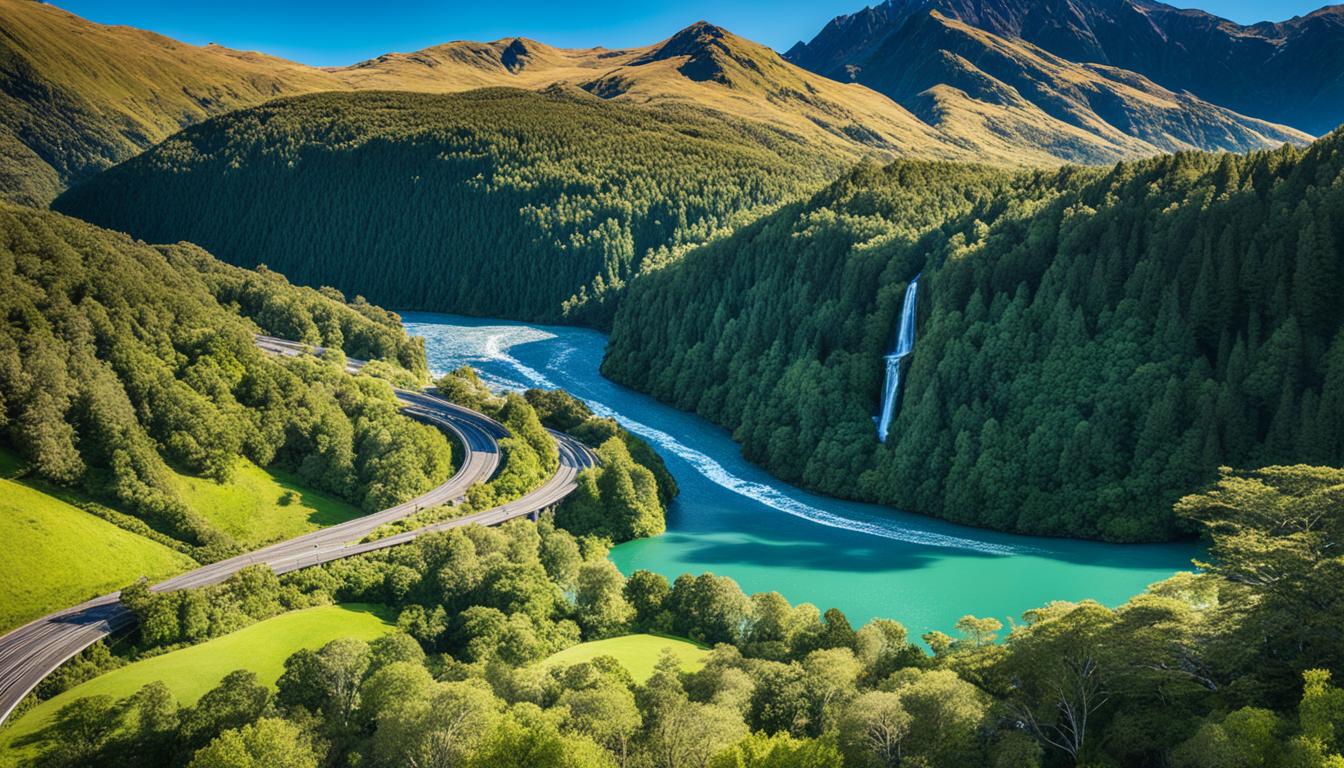Cambodia Biodiversity: Animal and Plant Species and What Is Under Threat
Cambodia is known for its diverse range of animal and plant species, making it a biodiversity hotspot in Southeast Asia. The country is home to magnificent wildlife, including elephants, bears, gaur, and stunning coral reefs. However, this rich biodiversity is under threat from various factors.
- Cambodia boasts a wide variety of animal and plant species, making it a biodiversity hotspot.
- Wildlife in Cambodia faces threats such as deforestation, illegal wildlife trade, destructive fishing practices, and unsustainable developments.
- Conservation organizations like Fauna & Flora are actively working to protect Cambodia’s biodiversity.
- USAID is involved in preserving and managing Cambodia’s natural resources, promoting sustainable development and protecting protected areas.
- WWF-Cambodia focuses on conserving the biodiversity of the Eastern Plains Landscape and works towards improved community-based natural resource management.
With its remarkable biodiversity, Cambodia holds immense value in preserving and protecting its unique ecosystems for future generations. The ongoing efforts of conservation organizations and international collaborations are crucial in ensuring the sustainability and well-being of Cambodia’s wildlife and natural resources.
Exploring Cambodia’s Biodiversity Hotspots
Cambodia boasts several biodiversity hotspots that are home to unique and endangered species. These hotspots are characterized by their rich ecosystems and diverse habitats, making them crucial for the conservation of Cambodia’s natural heritage. Wildlife enthusiasts and nature lovers flock to these areas to witness the incredible array of flora and fauna that thrive within their boundaries.
One such hotspot is the Cardamom Mountains, located in the southwestern part of the country. This mountain range is a haven for wildlife, with its lush rainforests and pristine rivers. It is home to elusive species such as clouded leopards, Asian elephants, and sun bears. The Cardamom Mountains are not only a hotspot for biodiversity but also a sanctuary for many endangered species.
Another notable hotspot is the Tonle Sap Lake, one of the largest freshwater lakes in Southeast Asia. The lake and its surrounding wetlands support a diverse range of aquatic and terrestrial species. It is a vital breeding ground for fish, providing livelihoods for local communities. The Tonle Sap Lake is also a significant stopover site for migratory birds, attracting birdwatchers from around the world.

The Prek Toal Core Bird Reserve, situated on the northwestern shores of the Tonle Sap Lake, is a prime example of a hotspot dedicated to bird conservation. This reserve is a sanctuary for hundreds of bird species, including the endangered greater adjutant stork and the critically endangered Sarus crane. Visitors can witness the breathtaking sight of thousands of birds nesting and feeding in this important wetland habitat.
These biodiversity hotspots provide valuable wildlife habitats and contribute to the overall conservation efforts in Cambodia. Preserving these areas is crucial to safeguarding the country’s unique biodiversity and ensuring a sustainable future for both the wildlife and the people who depend on these ecosystems.
Wildlife Conservation Efforts in Cambodia
Several organizations are actively involved in wildlife conservation efforts in Cambodia, working towards preserving the country’s diverse range of species. These organizations focus on various aspects of conservation, including community engagement, biodiversity research and monitoring, and collaboration with international partners.
One notable organization is Fauna & Flora, which has been working in Cambodia for many years. They have implemented projects that promote sustainable development and aim to protect and restore critical wildlife habitats. Through community engagement, they empower local communities to actively participate in conservation efforts, creating a sense of ownership and responsibility for the natural resources.
“Conservation is not just about protecting animals and plants, but also about ensuring the well-being of local communities,” says Dr. Smith, a wildlife conservation expert at Fauna & Flora. “By involving communities in the decision-making process and providing them with alternative livelihood options, we can achieve long-term sustainability.”
Biodiversity research and monitoring are crucial in understanding the current state of Cambodia’s ecosystems and identifying areas of concern. By gathering data on species populations, habitat health, and threats, conservationists can develop targeted strategies for protection. This research is often conducted in collaboration with local universities, international research institutions, and government agencies.
Biodiversity Research in Cambodia
| Research Topic | Collaborating Institutions |
|---|---|
| Endangered Species Conservation | University of Phnom Penh, Wildlife Conservation Society |
| Ecosystem Health Assessment | Kingdom of Cambodia’s Ministry of Environment, International Union for Conservation of Nature |
In addition to local efforts, international organizations like USAID have contributed significantly to biodiversity conservation in Cambodia. USAID supports programs that promote sustainable development, protect protected areas, and strengthen environmental governance. By working closely with the Cambodian government and local communities, they aim to ensure the long-term preservation of Cambodia’s natural resources.

Another key player in wildlife conservation is WWF-Cambodia, focusing particularly on the Eastern Plains Landscape. With the support of local communities, they have implemented initiatives to combat logging, hunting, and land clearance. Through community-based natural resource management and the development of sustainable livelihoods, WWF-Cambodia aims to reduce threats to wildlife and forests in the region.
These conservation efforts highlight the importance of collaboration between organizations, communities, and government agencies in effectively protecting Cambodia’s biodiversity. By working together towards a common goal, they strive to ensure the continued existence of the country’s rich wildlife and natural habitats for future generations.
Threats to Cambodia’s Biodiversity
Cambodia’s rich biodiversity is under threat due to factors such as deforestation, illegal wildlife trade, and unsustainable development practices. These threats pose significant risks to the country’s natural resources and the diverse species that call Cambodia home.
“Deforestation in Cambodia is a major concern,” says Dr. Sophea, a leading environmental biologist.
“The rapid loss of forest cover is destroying crucial habitats for many animal and plant species, pushing them towards extinction.”
Data from the Ministry of Environment reveals that Cambodia has lost over 1.4 million hectares of forest between 2001 and 2019, primarily due to logging, agriculture expansion, and infrastructure development.

The illegal wildlife trade is another pressing threat to Cambodia’s biodiversity. Poaching and trafficking of endangered species, such as elephants, tigers, and pangolins, continue to deplete their populations. According to a report by Wildlife Alliance, Cambodia acts as a transit and destination country for illegal wildlife trade, fueled by demand for exotic pets, traditional medicine, and wildlife products.
| Threats to Cambodia’s Biodiversity | Impact |
|---|---|
| Deforestation | Loss of habitats, leading to species extinction |
| Illegal Wildlife Trade | Depletion of endangered species populations |
| Unsustainable Development | Disruption of ecosystems and natural resources |
Unsustainable development practices, such as unregulated mining, destructive fishing methods, and conversion of natural lands for agriculture and urbanization, further exacerbate the threats to Cambodia’s biodiversity. These practices disrupt ecosystems, pollute water sources, and accelerate the loss of habitats, leading to the decline of many species.
Protecting Cambodia’s Biodiversity
To address these challenges, environmental protection in Cambodia is crucial. Efforts by conservation organizations, government agencies, and local communities play a vital role in protecting and preserving Cambodia’s unique natural heritage.
- Conservation organizations like Fauna & Flora work closely with communities to promote sustainable development practices, empower local people, and raise awareness about the importance of biodiversity conservation.
- Biodiversity research and monitoring initiatives provide valuable data for effective conservation strategies and decision-making.
- Collaboration with international organizations, including USAID and WWF-Cambodia, helps leverage expertise, resources, and funding for comprehensive biodiversity conservation programs.
By implementing community-based natural resource management, developing ecotourism initiatives, and implementing stricter regulations against illegal wildlife trade, Cambodia can make significant progress in safeguarding its biodiversity for future generations.
It is essential for individuals, organizations, and governments to recognize the importance of environmental protection in Cambodia and take collective action to mitigate the threats facing the country’s rich biodiversity.
Protecting Cambodia’s Biodiversity through Community Engagement
Sustainable development and ecosystem preservation efforts in Cambodia heavily rely on community engagement and participation. By involving local communities in conservation initiatives, it becomes possible to create a sense of ownership and responsibility towards the country’s natural resources.
Community-based natural resource management plays a crucial role in safeguarding Cambodia’s biodiversity. When communities are empowered to manage their own resources, they become active participants in preserving the environment and promoting sustainable practices. This approach not only helps protect vulnerable species and their habitats but also supports the livelihoods and well-being of local communities.
A shining example of community engagement in Cambodia is the collaboration between Fauna & Flora and local communities. Their efforts focus on establishing community-managed conservation areas, where sustainable practices like agroforestry and ecotourism are encouraged. This partnership ensures that communities are directly involved in decision-making processes, leading to more effective conservation outcomes.
“By involving local communities in conservation initiatives, it becomes possible to create a sense of ownership and responsibility towards the country’s natural resources.”
Moreover, community engagement also helps raise awareness about the importance of biodiversity preservation. Local people are educated about the ecological significance of their surroundings, encouraging them to become custodians of their environment. This grassroots involvement not only fosters a deeper connection between communities and nature but also helps mitigate the threats posed by unsustainable development and destructive practices.
By prioritizing community engagement, Cambodia can continue its journey towards sustainable development and ensure the long-term preservation of its precious ecosystems. With the active participation of local communities, it is possible to strike a harmonious balance between development activities and the protection of biodiversity, paving the way for a more resilient and ecologically sustainable future.

| Key Benefits of Community Engagement in Biodiversity Conservation |
|---|
| 1. Empowers local communities to become stewards of their natural resources |
| 2. Supports sustainable livelihoods and economic development |
| 3. Raises awareness about biodiversity preservation |
| 4. Mitigates threats from unsustainable practices |
| 5. Fosters a sense of ownership and responsibility towards the environment |
Biodiversity Research and Monitoring in Cambodia
Ongoing biodiversity research and monitoring initiatives in Cambodia contribute to a deeper understanding of the country’s unique and endangered species. Scientists and conservation organizations work tirelessly to gather data and monitor the health of Cambodia’s ecosystems, helping to inform conservation strategies and protect valuable biodiversity hotspots.
One critical aspect of biodiversity research in Cambodia is the study of wildlife populations and their habitats. Through techniques such as camera trapping, researchers can collect data on species abundance, behavior, and distribution. This information is vital for identifying priority areas for conservation and monitoring changes in population sizes over time. For example, studies have shown alarming declines in populations of iconic species like tigers and Asian elephants, highlighting the urgency for their protection.
Another area of focus in biodiversity research is the exploration of Cambodia’s diverse ecosystems, including its forests, wetlands, and marine environments. By studying the ecological interactions between different species and their habitats, scientists can gain insight into the complex web of life in Cambodia. This knowledge is crucial for developing effective conservation strategies and safeguarding the delicate balance of these ecosystems.
| Biodiversity Research and Monitoring Techniques | Examples |
|---|---|
| Camera Trapping | Capturing images and videos of elusive wildlife |
| Ecological Surveys | Gathering data on species diversity and habitat quality |
| GPS Tracking | Monitoring animal movements and migration patterns |
“Biodiversity is the foundation of life on Earth. Protecting Cambodia’s unique and fragile ecosystems is not just essential for the country’s future but for the future of our planet.” – Dr. Jane Wilson, Wildlife Biologist
Collaboration between local communities, researchers, and conservation organizations is key to the success of biodiversity research and monitoring efforts in Cambodia. By involving local people in data collection and ecological monitoring, community-based initiatives can provide valuable insights into the challenges faced by both wildlife and humans. This approach also fosters a sense of ownership and responsibility for protecting Cambodia’s natural heritage.

In summary, biodiversity research and monitoring in Cambodia play a vital role in understanding and conserving the country’s unique species and ecosystems. By studying wildlife populations, exploring diverse habitats, and engaging local communities, researchers contribute to the protection of Cambodia’s biodiversity. This knowledge is invaluable for developing effective conservation strategies, mitigating threats, and ensuring a sustainable future for both wildlife and people.
Collaboration with International Organizations
International organizations like Fauna & Flora, USAID, and WWF-Cambodia play a vital role in supporting Cambodia’s biodiversity conservation efforts. These organizations have been actively working in partnership with the Cambodian government and local communities to protect and preserve the country’s rich natural resources.
Fauna & Flora, for instance, has been working in Cambodia for over two decades, focusing on community engagement, biodiversity research, monitoring, and combating the illegal wildlife trade. Through their projects, they aim to empower local communities, raise awareness about the importance of conservation, and develop sustainable livelihoods that are compatible with nature.
USAID is also actively involved in preserving and managing Cambodia’s natural resources. They work closely with the Cambodian government to promote sustainable development, protect protected areas, and strengthen local capacities for environmental management. Their efforts are aimed at ensuring the long-term sustainability of Cambodia’s biodiversity and natural ecosystems.
In the Eastern Plains Landscape, WWF-Cambodia is leading conservation efforts to protect the region’s unique biodiversity. This includes addressing threats such as logging, hunting, land clearance, and economic development. Through their projects, they aim to improve community-based natural resource management, develop ecotourism opportunities, and reduce threats to wildlife and forests.

| Organizations | Focus Areas |
|---|---|
| Fauna & Flora | Community engagement, biodiversity research, illegal wildlife trade prevention |
| USAID | Sustainable development, environmental protection, capacity building |
| WWF-Cambodia | Conservation in the Eastern Plains Landscape, community-based natural resource management, ecotourism development |
Fauna & Flora’s Contribution to Biodiversity Conservation
Fauna & Flora has been at the forefront of biodiversity conservation in Cambodia, actively working towards protecting endangered species and their habitats. Through their comprehensive initiatives, they have made significant contributions to safeguarding Cambodia’s rich biodiversity.
One of their key areas of focus is community engagement. By partnering with local communities, Fauna & Flora has implemented sustainable conservation practices that empower individuals and foster a sense of ownership over natural resources. This approach not only ensures the protection of endangered species but also promotes the overall well-being of the communities.
| Conservation Efforts | Impact |
|---|---|
| Implementing community-based natural resource management | Empowering local communities in the conservation process and promoting sustainable resource use |
| Supporting ecotourism initiatives | Generating alternative income sources for communities and reducing the reliance on activities harmful to biodiversity |
| Establishing wildlife sanctuaries | Providing protected areas for endangered species to thrive and recover their populations |
In addition to community engagement, Fauna & Flora places great emphasis on biodiversity research and monitoring. By conducting rigorous scientific studies and implementing efficient monitoring systems, they gather valuable data on Cambodia’s diverse species. This knowledge is crucial for developing effective conservation strategies and ensuring the long-term survival of endangered wildlife.
Through collaboration with government agencies, local communities, and other conservation organizations, Fauna & Flora plays a pivotal role in coordinating efforts to protect Cambodia’s biodiversity. By sharing expertise, resources, and knowledge, they create a united front against the threats posed to the country’s natural heritage.
Quote:
“Fauna & Flora’s commitment to biodiversity conservation in Cambodia is commendable. Their holistic approach, focusing on community engagement, research, and collaboration, sets a strong example for sustainable conservation efforts.” – Dr. Sareth Soeun, Director of Cambodian Biodiversity Institute

In conclusion, Fauna & Flora’s dedication to biodiversity conservation in Cambodia has had a significant impact on protecting endangered species and their habitats. Their community engagement initiatives, biodiversity research and monitoring, and collaborative efforts have set the stage for sustainable conservation practices in the country. It is through organizations like Fauna & Flora that Cambodia’s unique and diverse ecosystems can thrive and continue to inspire future generations.
USAID’s Role in Preserving Cambodia’s Natural Resources
USAID plays a vital role in preserving Cambodia’s natural resources, promoting sustainable development practices, and safeguarding the environment. With a focus on conservation efforts, USAID works closely with local communities, government agencies, and conservation organizations to implement programs that protect Cambodia’s rich biodiversity and support sustainable livelihoods.
Through its Greening Prey Lang project, USAID aims to conserve the Prey Lang Forest, one of Cambodia’s largest remaining lowland evergreen forests. This project focuses on enhancing community-based natural resource management, strengthening law enforcement against illegal logging and encroachment, and promoting sustainable livelihoods for local communities. The Prey Lang Alliance, a collaboration between government and civil society organizations, is instrumental in implementing this project.
“The partnership between USAID and the Prey Lang Alliance is crucial in our efforts to protect the Prey Lang Forest. By working together, we can address the various challenges that threaten this unique ecosystem and ensure its long-term sustainability.”
In addition to its efforts in the Prey Lang Forest, USAID supports the management and protection of other critical ecosystems in Cambodia, including the Tonle Sap Lake and the Cardamom Mountains. These areas are not only biodiversity hotspots but also essential for the livelihoods of local communities who rely on the natural resources they provide.
Through its programs, USAID strives to promote sustainable development practices that balance economic growth with environmental conservation. By empowering local communities to actively participate in the management of their natural resources, USAID is working towards a future where Cambodia’s biodiversity is protected, and sustainable livelihoods are secured for generations to come.

| Key Initiatives | Outcomes |
|---|---|
| Greening Prey Lang project | Enhanced community-based natural resource management Strengthened law enforcement against illegal logging and encroachment Promotion of sustainable livelihoods |
| Tonle Sap Lake conservation program | Protection of critical wetland ecosystems Support for sustainable fishing practices Enhanced biodiversity conservation |
| Cardamom Mountains preservation initiative | Conservation of unique forest habitats Protection of endangered species Empowerment of local communities |
Conservation Efforts in the Eastern Plains Landscape
WWF-Cambodia is actively engaged in conserving the biodiversity of the Eastern Plains Landscape through various initiatives, addressing threats such as logging, hunting, and economic development. This region is home to diverse wildlife, including Asian elephants, Indochinese tigers, and Siamese crocodiles. However, these species face numerous challenges due to habitat fragmentation and human activities.
To combat these threats, WWF-Cambodia works closely with local communities, government agencies, and other partners to develop and implement effective conservation strategies. One of their key initiatives is promoting sustainable land use practices and supporting community-based natural resource management. This includes establishing community forest management systems, implementing sustainable agriculture practices, and creating alternative livelihood opportunities for local communities.
Furthermore, WWF-Cambodia is actively involved in research and monitoring activities to better understand the biodiversity of the Eastern Plains Landscape. They collaborate with scientists and researchers to gather data on endangered species, their habitats, and the impacts of human activities. This knowledge helps inform conservation efforts and guide decision-making processes.

In addition to on-the-ground conservation work, WWF-Cambodia also focuses on raising awareness and advocating for stronger environmental policies. They engage local communities, schools, and stakeholders to promote sustainable practices and foster a sense of stewardship towards the natural resources of the Eastern Plains Landscape.
By taking a holistic approach to conservation, WWF-Cambodia aims to secure a future for the region’s unique biodiversity, ensuring that future generations can continue to enjoy the benefits of a healthy and thriving ecosystem.
Enhancing Community-Based Natural Resource Management
Community-based natural resource management plays a critical role in strengthening conservation efforts in Cambodia, ensuring sustainable use of resources and protection of wildlife habitats. By empowering local communities to take an active role in managing their natural resources, this approach not only helps preserve Cambodia’s rich biodiversity but also promotes sustainable development and improves the livelihoods of the people.
One example of successful community-based natural resource management is the Tonle Sap Lake, a UNESCO Biosphere Reserve and one of the most important freshwater habitats in Southeast Asia. Here, local communities have implemented measures to protect fish breeding grounds, regulate fishing practices, and manage wetland ecosystems. These initiatives have not only helped conserve endangered fish species and their habitats but have also led to increased fish populations, benefiting both the local communities and the wider ecosystem.
In addition to fisheries management, community-based initiatives are also crucial in combating deforestation and protecting land-based wildlife habitats. The Prey Lang Wildlife Sanctuary, spanning four provinces in northern Cambodia, is a prime example. Local communities, supported by organizations like Fauna & Flora, actively participate in patrols to monitor and prevent illegal logging and land encroachments. They also engage in reforestation efforts, planting thousands of trees to restore degraded forest areas. These community-led conservation measures have been instrumental in preserving the sanctuary’s biodiversity, which includes critically endangered species such as the Indochinese tiger and the giant ibis.
| Benefits of Community-Based Natural Resource Management |
|---|
| 1. Empowers local communities to take ownership of their natural resources |
| 2. Creates incentives for sustainable use of resources |
| 3. Enhances biodiversity conservation |
| 4. Improves local livelihoods through sustainable economic opportunities |
| 5. Strengthens social cohesion and community resilience |
Through community-based natural resource management, Cambodia can continue to protect its rich biodiversity and promote sustainable development. By fostering partnerships between local communities, government agencies, and conservation organizations, the country can ensure the long-term conservation of its natural resources and the well-being of its people.

In order for community-based natural resource management to be successful, it is crucial to invest in education and raise awareness among local communities. By providing training and capacity-building programs, communities can develop the knowledge and skills necessary to effectively manage their natural resources. Educational initiatives can also help instill a sense of pride and responsibility in community members, fostering a culture of environmental stewardship.
Conclusion
Community-based natural resource management is a powerful tool for conserving Cambodia’s biodiversity, protecting wildlife habitats, and promoting sustainable development. By involving local communities in the decision-making process and empowering them to take an active role in resource management, Cambodia can ensure the long-term conservation of its natural heritage for future generations to enjoy.
Conclusion
In conclusion, safeguarding Cambodia’s biodiversity requires collective efforts in conservation, sustainable development, and engagement with local communities. Cambodia is blessed with rich biodiversity, being home to a diverse range of animal and plant species, including elephants, bears, gaur, and vibrant coral reefs.
However, this biodiversity faces numerous threats, such as deforestation, illegal wildlife trade, destructive fishing practices, and unsustainable developments. To combat these challenges, conservation organizations like Fauna & Flora have been at the forefront, working tirelessly to protect Cambodia’s natural resources.
These organizations prioritize community engagement, biodiversity monitoring, and research. By involving local communities in conservation efforts, they foster a sense of ownership and ensure sustainable practices for the long-term preservation of wildlife and their habitats.
USAID also plays a vital role in preserving and managing Cambodia’s natural resources. Their focus on sustainable development and environmental protection helps safeguard important ecosystems and protected areas across the country.
In the Eastern Plains Landscape, WWF-Cambodia is leading conservation efforts to preserve the region’s biodiversity. Their strategies involve tackling threats such as logging, hunting, land clearance, and economic development. By promoting community-based natural resource management and developing ecotourism opportunities, they aim to reduce human-wildlife conflict, support local livelihoods, and conserve the unique wildlife and forests of the Eastern Plains.
Protecting Cambodia’s biodiversity is a shared responsibility. Through collaboration between conservation organizations, international support from entities like USAID, and active participation from local communities, we can ensure the sustainable future of Cambodia’s remarkable natural heritage.
FAQ
What is Cambodia’s biodiversity like?
Cambodia is rich in biodiversity and is home to various species, including elephants, bears, gaur, and coral reefs.
What threats does Cambodia’s biodiversity face?
Cambodia’s biodiversity faces threats such as deforestation, illegal wildlife trade, destructive fishing practices, and unsustainable developments.
What organizations are working to protect Cambodia’s biodiversity?
Organizations such as Fauna & Flora, USAID, and WWF-Cambodia have been working to protect Cambodia’s biodiversity for many years.
How does Fauna & Flora contribute to biodiversity conservation in Cambodia?
Fauna & Flora focuses on community engagement, biodiversity monitoring, research, and stopping the illegal wildlife trade to contribute to biodiversity conservation in Cambodia.
What is USAID’s role in preserving Cambodia’s natural resources?
USAID is involved in preserving and managing Cambodia’s natural resources, promoting sustainable development, and protecting protected areas.
What is WWF-Cambodia doing to conserve the Eastern Plains Landscape?
WWF-Cambodia is working to conserve the Eastern Plains Landscape by combating threats such as logging, hunting, land clearance, and economic development.
How does community-based natural resource management contribute to conservation efforts in Cambodia?
Community-based natural resource management plays a crucial role in Cambodia’s conservation efforts by improving ecosystem preservation and sustainable development.







